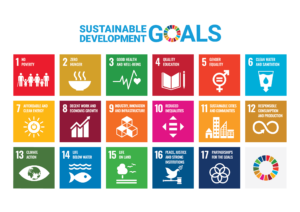As 2022 comes to an end, it’s time to reflect on what we accomplished in the past year and make resolutions for the year ahead. As you look to set new goals for your tourism business or destination in 2023, it’s important to consider integrating sustainability into your plans. With a well thought out sustainability strategy, your business or organization can increase your financial performance and make a positive impact on the world at the same time.
It is no surprise that financial opportunities can be found in reducing energy, water and waste but savings can also be found by aligning with your employees and customers values. Engaged, satisfied and valued employees lead to improved productivity and retention, resulting in less employee turnover, which reduces stress and saves your business in the long run. Research also shows that travelers are more likely to choose businesses that align with their values. More and more, travelers are seeking out businesses that are communicating their sustainable actions, products and services – and that are centered around social, environmental or cultural sustainability.
If you are looking for some inspiration to get started – here are five key steps to creating an impact plan and sustainability strategy for your tourism business or destination:
1. Engage your team:
Having staff participation from all levels of the organization – including senior leadership – promotes engagement and ensures buy-in to help make the plan successful. We suggest implementing monthly sustainability focused meetings, or adding sustainability as a topic of discussion in your regularly scheduled meetings. Make sure these actions, ideas and discussions are documented, assigned and tracked.
2. Establish a baseline:
What gets measured gets managed. A great way to identify how your tourism business or destination is currently performing, on a broad scale of sustainability indicators, is by taking a free Sustainability Score assessment. With criteria recognized by the Global Sustainable Tourism Council, and aligned with the UN Sustainable Development Goals (UN SDGs), it provides a snapshot of your sustainability performance in key areas of impact. You can see where your organization’s strengths are and where you have opportunities to do better, allowing you to set some measurable goals for improvement.
3. Set goals:
Having a vision of what sustainability looks like within your business or organization, and setting goals to achieve that can be an exciting but challenging task. Start by brainstorming what your organization could look like if you were truly sustainable, or even regenerative, in 5 years, 10 years, or 25 years — what specific goals could help you get there? From here, work with your team to choose 3 to 5 goals that align with your strategy or business plan. If you need inspiration, draw on the UN SDGs.
Here’s a hint: The best goals will be SMART: specific, measurable, achievable, relevant, and time-bound!
4. Determine actions to achieve goals:
Now that you’ve decided on your goals, what key action items will be necessary to achieve them? Work with your team to establish what steps, timelines and resources will be needed to be successful. Ideally, put the actions that have the lowest budget requirements and the greatest impacts, first. Achieving some early wins will help to build momentum!
5. Document your plan:
Successful sustainability action plans will include the:
– Goal
– Steps to achieve the goal
– Person responsible for each action
– Budget required
– Timeline
– Regular updates on the status and measurement of impact
Include and update this plan during your regular team meetings, and report on your results regularly through your internal communications channels.
Spread the Word!
Don’t shy away from sharing your plan publicly. Be transparent with your guests or other stakeholders to show that you’ve measured your performance and made a commitment to improving your sustainability. It’s also important to provide regular updates about your progress and the positive impacts that you’re making throughout the process. Your website, social media channels, blog, and sustainability achievement awards — such as TIAC’s Air Transat Sustainable Tourism Award — are great ways to share your sustainability story.
Sustainability is a journey, not a destination, so have fun along the way and feel good knowing that you’re part of a growing global movement that is changing the world through tourism, and leveraging the power of the industry as a force for good.


